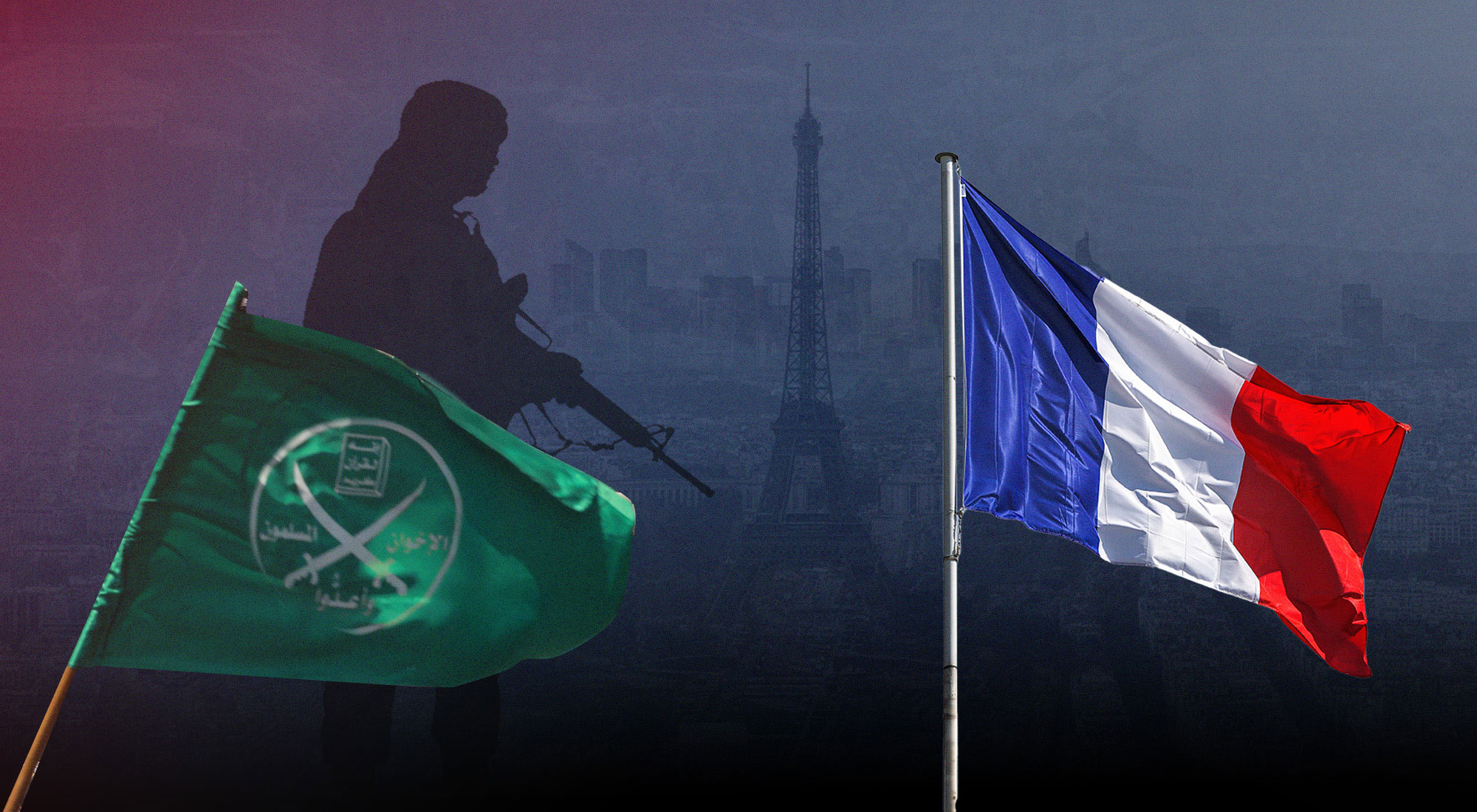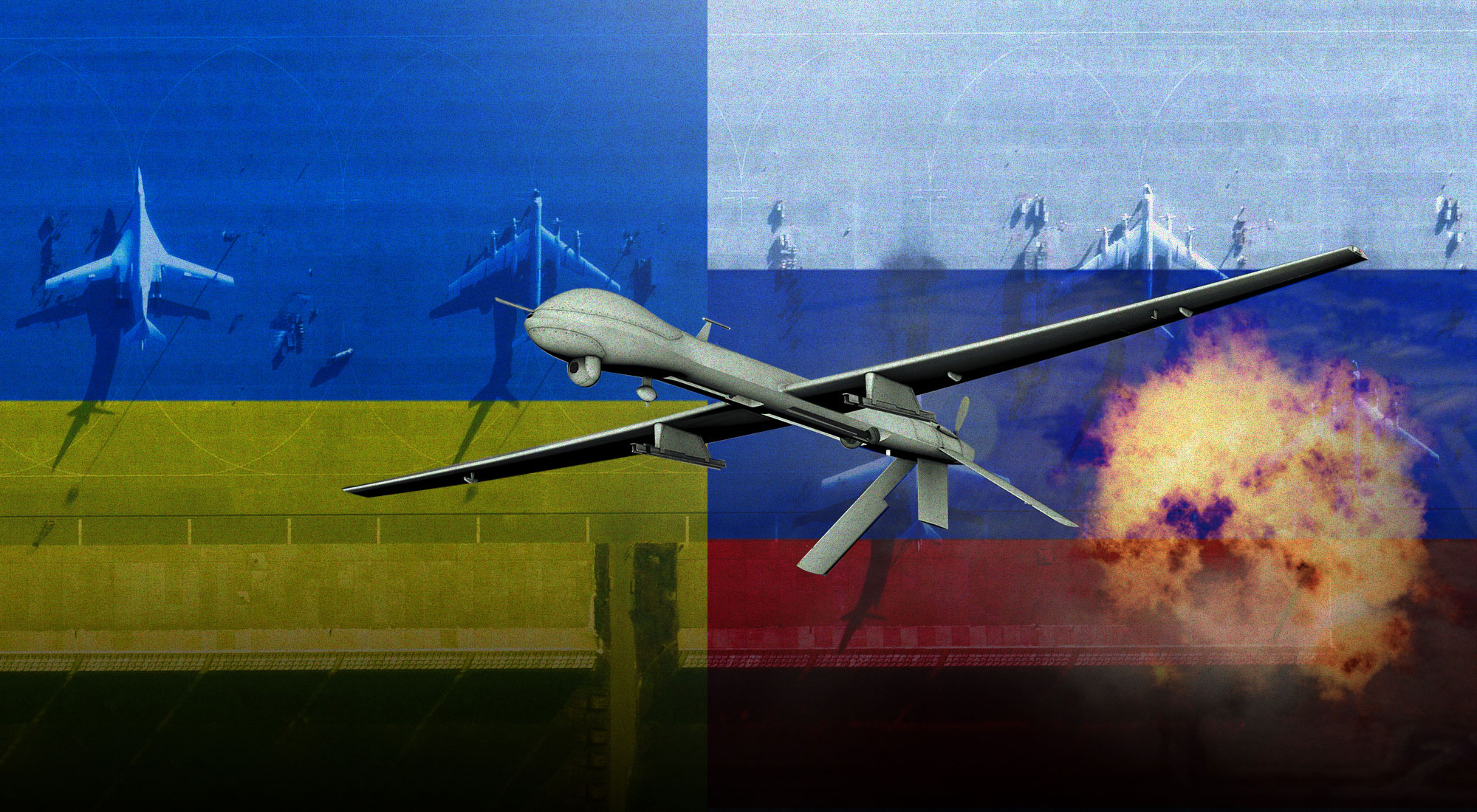The 11-day war opposing Israel to Hamas in May 2021 has already generated numerous comments on its political ramifications, be it for the respective domestic politics of the Israelis and the Palestinians or, at the international level, the reluctance of the new US administration to interfere in the conflict. However, discussion on the implications of the conflict has less focused on the significance of the clash at the military level, and specifically on what this latest confrontation tells us about the future way of war in the region.
The Gaza war of May 2021 was the fourth time Israel and Hamas fought each other since 2008 (meaning a war every 3-4 years on an average). In this perspective, this latest round did not demonstrate a major shift from the past, but it confirmed underlying trends in the way both sides plan and conduct their operations. For Hamas, it emphasized rocket warfare as its primary strategy. For Israel, it evidenced the importance of defensive means such as Iron Dome to mitigate the effects of Hamas’ rocket campaign. But Israel’s intensive air campaign on Gaza also underlined the country’s enduring reliance on a military offensive posture to deter non-state actors.
In this perspective, the study of the Gaza War can provide us with important lessons not only on the case of the Israel-Hamas conflict but also on broader trends in Middle Eastern warfare. To that aim, this paper starts by exploring the central role now conferred to rocket warfare by non-state actors like Hamas. The second section then looks at the uncertain sustainability of defensive measures against such tactics. Finally, we discuss the broader implications of the Gaza war for non-state strategies in the region and the ways governments can address them.
Hamas and the Rise of Rocket Warfare
By firing more than 4 000 rockets on the Israeli territory in only 11 days, Hamas displayed the exponential growth over recent years of its arsenal that analysts and governments had already grown concerned about. This is not simply a matter of quantity but of quality too: many of these rockets reached distant urban centers such as Tel Aviv and Jerusalem, evidencing the increased range of these systems. The Gaza war of 2021 also showed the ability of Hamas, not only to fire thousands of rockets at Israel but to do so in the face of an Israeli bombing campaign that aimed to destroy the military infrastructures of the Palestinian organization.
The strategy of Hamas in May 2021 can be understood as the result of a twenty-year evolution. Historically, the first reported case of Hamas’ use of rockets dates to 2001 amid the second intifada.[1] Back then, the rocket landed on Sderot, a city 13 kilometers away from Gaza, without inflicting any serious damage. This was the beginning of an internal shift that would see Hamas changing its military posture in the following two decades to put a new emphasis on rockets as its primary means to attack Israel. This shift was largely informed by the experience of Lebanon’s Hezbollah, which had used its Katyusha rockets to destabilize the northern region of Israel since the early 1990s. By 2001, Hezbollah boasted that it was specifically its rocket attacks that forced Israel’s withdrawal from South Lebanon.
Throughout that period, Hamas acquired Qassam rockets, whose first version had a range of only 3 kilometers. This meant in practice that the group could at best target Israeli cities around Gaza. Still, rocket warfare steadily became part of Hamas’ military strategy. When the Israeli government of Ariel Sharon withdrew its armed forces from the Gaza Strip in 2005, Ismail Haniyeh, one of the leading figures of Hamas asserted that the “Qassam rocket is what forced the enemy out”, a statement mirroring the rhetoric of Hezbollah in South Lebanon.[2]
The unsophisticated nature of rockets and their modest cost meant that not only Hamas. but other organizations such as the Islamic Jihad Movement in Palestine (IJMP). started building their own arsenal.[3] As the inventories grew, so did their use. If by 2002, 17 Qassam rockets had been launched from Gaza, the number jumped to 4000 by 2009.[4]
Initially, Hamas relied on arms transfer by external support, namely Iran. Teheran supplied Hamas with weaponry through the Sinai Peninsula and sometimes by sea using small boats. But slowly, the Palestinian group started reorganizing its supply chain from external arms transfer to local production. The ambitions of Hamas for indigenous capabilities grew and by the end of the 2000s, a rocket research and development center was created within the Islamic University of Gaza.[5]
This did not mean Iran’s support stopped; quite the contrary. Since then, both Hamas and the IJMP combined local production supported by foreign assistance and, in the case of the most sophisticated systems, direct arms transfer.[6] The latter case was illustrated in 2012, when Hamas first used the Iran-made Fajr 5 rocket whose 75-km range represented a significant breakthrough for the geographical coverage of its arsenal. This external support by Hamas was not even shrouded in secrecy: Iranian officials like IRGC Commander Mohammed Ali Jafari went as far as to say that they were “honored to announce that we gave them (Hamas) the technology of how to make Fajr-5 missiles”.[7] Likewise, Hezbollah Secretary General Hassan Nasrallah acknowledged in 2017 that his organization had “transferred arms to Gaza”.[8]
In this context, the intensive use of rockets in May 2021 by Hamas has confirmed the maturation of its military strategy that had been in the making for the last two decades. The group has put an emphasis on rockets as a way to bypass the fundamental asymmetry of firepower between Israel’s armed forces and its combatants.
The Uncertain Sustainability of Defense
Faced with Hamas’ rocket strategy, Israel relied last May on a combination of defensive and offensive means that also confirmed preexisting trends. Its air defense system, Iron Dome, played a key role to intercept rockets launched from Gaza. Meanwhile, the Israeli Air Force conducted an intensive campaign that fired at more than 800 targets inside Gaza. The campaign was similar in scope and intensity to the previous ones. The Israeli military also mobilized 9,000 reservists as it contemplated a ground invasion in the early days of the conflict – which eventually did not materialize.
As the war escalated, social medias spread science-fiction-like videos of Israel’s Iron Dome interceptors destroying incoming rockets in the sky. In the following days, media outlets around the world started publishing pieces about Iron Dome and its reportedly impressive performance. Exact figures are not publicly available but Israeli officials claim the system to be 90 to 95 percent effective at intercepting rockets.
The public infatuation with Iron Dome highlights the now prominent role of defensive means against rocket attacks. The development of the system started in 2005 and its first batteries were deployed in late 2011. Contrary to a common misunderstanding, it reflected the Israeli military adaptation to the increased number of rockets coming from Gaza and not from South Lebanon where Hezbollah operates more advanced systems. Therefore, the system was covering at first, only the southern cities of Israel (Ashdod, Ashkelon, Beer Sheba).
Military commanders were initially reticent regarding the reliance on defensive means that could not offer a fully comprehensive coverage. They worried it would remove resources previously allocated to offensive capabilities while creating a false sentiment of invulnerability among the population. That is why in 2010, Gadi Eisenkot, the then-head of Israel’s Northern Command, asserted that “residents of Israel shouldn’t be under the illusion that someone will open an umbrella over their heads”.[9]
Since then, Iron Dome has been deployed in each round of the Israel-Hamas conflict and while the number of rockets fired from Gaza improved, so did the rate of interception: in November 2012, during operation “Pillar of Defense”, Iron Dome reportedly achieved a success rate of 85 percent in destroying rockets falling in urban areas. In July 2014, during operation “Protective Edge”, the system progressed by reaching a 90 percent interception rate.
It is worth staying cautious about these numbers though. As mentioned earlier, there is no publicly available data to verify them. In fact, some independent experts have challenged their veracity. Back in 2014, Theodore Postol, a well-known physicist from MIT argued that the numbers were very likely inflated and much closer to 20 percent.[10] The politics behind the interception rate matter: for Israeli politicians, it justifies the expensive budgetary resources dedicated to the system, vis-a-vis other programs and it also reassures the public during a war.
But at the operational level, it is also necessary to distinguish between what Iron Dome can and cannot do. Designed to intercept rudimentary projectiles targeting populated areas with a range of up to 70 kilometers, Iron Dome has been successful with most of the arsenal currently controlled by Hamas and other Palestinian groups. In terms of geographical coverage, Israel had deployed before the conflict of May 2021, ten batteries across the country with each battery able to defend 155 square kilometers.[11]
But beyond the official upbeat statements, there are several reasons to question the future relevance of the system. First, the comparative cost between Iron Dome and Hamas’ rockets fired during the latest war is telling: whereas Qassam rockets cost about $500, the price for one Iron Dome interceptor (named a Tamir missile) amounts to $50,000. The significant cost of the system (which includes also radars and command and control units) has led the Israelis to increasingly rely on US co-funding: by 2020, it was estimated that the US government had overall provided $1.6 billion to the production of the batteries and in fact 60 to 70 percent of the components of the interceptor are manufactured in the US.[12] Given the cheap cost of rockets, the technical effectiveness of Iron Dome is not enough to deter Hamas, or any other non-state actor in the region from building its own arsenal.
This leads to the second development that the Gaza war evidenced: the growing ability of non-state actors to overwhelm defensive systems. Hamas and the IJMP have demonstrated their capacity and resolve to launch mass saturation attacks. On May 11, both organizations reportedly fired 137 rockets at Tel Aviv in only five minutes, calling it “the largest ever barrage”.[13] The day after, another 850 rockets landed across the Israeli territory. These salvos did not render Iron Dome irrelevant, but they underlined a pattern: the intentions and the confirmed capabilities of Hamas to use rockets as a means for attrition war. For the defender, this means that the longer the conflict lasts, the more difficult it becomes to protect its territory against these attacks.
Furthermore, the saturation of Israel’s defensive means could have become a greater issue if a second front had opened. In the last days of the conflict, a few rockets were in fact fired from south Lebanon and triggered a response from Israel’s artillery units.[14] Hezbollah denied any involvement and further escalation was prevented. Given the sheer inventories of rockets of Hezbollah (estimated to at least 150 000), the launching of a two-front rocket campaign – or even a three-front scenario if one includes Iran-backed groups on the Syrian side of the Golan area – might also quickly exhaust the ability of Iron Dome to intercept all the incoming projectiles targeting urban centers.
Eventually, the uncertainties surrounding defensive means also explain why at the military level, the Israeli response relied on offensive measures, just like in the previous rounds of the conflict. The Israeli Air Force conducted an intensive air campaign aiming at destroying the infrastructures of Hamas. But the destruction of civilian accommodations and the human toll on the Palestinians proved, as before, the limits of using airpower in densely populated areas like Gaza.
Meanwhile the Israeli government mobilized the reserve for a potential ground attack but eventually did not go further. The decision not to proceed with such invasion may be credited with the ability of Iron Dome to mitigate the impact of the rocket campaign. In other words, Iron Dome did not only prevent destruction of urban centers, but it may also have prevented military escalation. Overall, the way the Israeli armed forces conducted the war was not fundamentally different from their previous experiences since 2008: using Iron Dome to counter rocket attacks while waging an offensive on Gaza to degrade the capabilities of Hamas.[15]
The Gaza war and the Future of Non-State Warfare in the Middle East
The Gaza war of May 2021 may not constitute a departure from the previous rounds of the Israel-Hamas conflict, but it does confirm trends that have implications for Gaza, and also more broadly for warfare involving non-state actors. First, the conflict evidenced how difficult it can be for modern, highly advanced states to prevent non-state armed groups to build their own arsenal of rockets and to use them.
The steady shift from arms transfers of external sponsors, namely Iran, to indigenously made inventories is likely to expand in Gaza and elsewhere; especially as the last war reinforces the belief among insurgents and terrorists that this arsenal constitutes the most effective way to attack Middle Eastern states. But beyond rockets, Hamas and the IJMP do not seem yet to possess advanced arsenals like Hezbollah, such as short-range ballistic missiles. Likewise, if Iranian officials suggested in the past that they had transferred precision-guided weapons to the groups in Gaza, there has not been any evidence of them being used during the last conflict. A greater accuracy would also increase the level of vulnerability for the targeted country.
Moreover, the firepower capacity of non-state groups like Hamas and the IJMP could also provide a much more potent challenge to Israel’s air defense systems and general security if they combine drones and rockets in systematic swarming attacks. Last May, Hamas already launched a few “kamikaze” drones dubbed “Shehab” (resembling the Iranian Ababil-T drones) that were either destroyed by Iron Dome or in one case at least, by an air-to-air missile fired from an Israeli F16 fighter.[16] In Yemen, the Houthis have used for several years now “Qasef-1” drones (also very similar to the Iranian Ababil-T UAVs) targeting specifically the Patriot surface-to air missile defense batteries of the Saudi-led coalition.[17] A joint campaign combining drone strikes on the radars of Iron Dome batteries and rocket attacks on urban centers could further increase the pressure on the defensive means.[18]
Finally, a dauting scenario for Israeli and Palestinian populations remains the possibility of a multiple-front campaign launched from Gaza, South Lebanon, and possibly Syria. The events leading up to such scenario are not in place right now: it would imply a level of resolve and coordination between Hamas, Hezbollah, Iran and the Assad regime in Syria that is far from certain. But at the operational level, it could render Iron Dome irrelevant, and it could turn the conflict into a regional confrontation.
Considering these developments, air defense will remain a critical asset to mitigate the effects of non-state attacks, but it is an insurance policy whose coverage may progressively diminish (though not its cost) as groups such as Hamas adapt their tactics. As a result, state armed forces in the region are likely to rely on offensive as their prevailing military posture. However, air campaigns such as the one conducting by Israel in Gaza also have obvious limitations. As evidenced by the history of Israel’s operations against Hamas or Hezbollah, airstrikes cannot fully destroy the inventories of groups which have mastered the art of concealing rockets and mobile launchers. The fact that these conflicts take place in heavily populated areas also constrain the ability of states to retaliate decisively against militias that can easily hide among the civilians. The consequences of a military offensive in this environment would therefore be hard to control and the risks of escalation by accident would be high.
All in all, these trends suggest significant challenges on the options left to military commanders between offense and defense vis-a-vis non-state armed groups like Hamas. This means eventually that the most effective way to address the issue is to break the ongoing trends in rocket development. This would imply to negate the ability of militias to produce their own inventories and to access sensitive materials. A starting point for that task could be to revive regional talks on diplomatic cooperation against missile proliferation and transfer.
References:
[1] Uzi Rubin, “The Missile Threat from Gaza: From Nuisance to Strategic Threat”, Begin Sadat Center for Strategic Studies, 1 December 2011. https://besacenter.org/the-missile-threat-from-gaza-from-nuisance-to-strategic-threat-3-2/
[2] Quoted in: Daniel Byman, A High Price: The Triumphs and Failures of Israeli Counterterrorism (Oxford: Oxford University Press, 2011), p.177.
[3] Benedetta Berti, “Salafi-Jihadi Activism in Gaza: Mapping the Threat”, CTC Sentinel, May 2010, Vol. 3, No. 5, p. 5.
[4] Daniel Byman, op. cit., p.183.
[5] Yoram Cohen, Jeffrey White, Hamas in Combat: The Military Performance of the Palestinian Islamic Resistance Movement, Washington, Washington Institute for Near East Policy, October 2009.
[6] International Institute for Strategic Studies, Open-Source Analysis of Iran’s Missile and UAV Capabilities and Proliferation, April 2021, p.29. https://www.iiss.org/blogs/research-paper/2021/04/iran-missiles-uavs-proliferation
[7] Saeed Kamali Dehghan, “Iran supplied Hamas with
Fajr-5 missile technology”, The Guardian, 21 November 2012, https://www.theguardian.com/world/2012/nov/21/iran- supplied-hamas-missile-technology.
[8] Jack Khoury, Reuters, “Nasrallah Admits: Hezbollah Smuggled Advanced Arms Into Gaza”, Haaretz, 20 November 2017, https://www.haaretz.com/middle-east-news/ nasrallah-admits-hezbollah-smuggled-advanced-arms-into- gaza-1.5467043.
[9] “Eizenkot: Rocket Defenses Designed for IDF, Not Citizens”, Jerusalem Post, January 12, 2010.
[10] Theodore Postol, “An Explanation of the Evidence of Weaknesses in the Iron Dome Defense System”, MIT Technology Review, 15 July 2014
[11] Jeremy Sharp, US Foreign Aid to Israel, Congressional Research Service, 16 November 2020, p.13. https://fas.org/sgp/crs/mideast/RL33222.pdf
[12] Jeremy Sharp, op. cit., p.16.
[13] Joseph Trevithick, “Largest Rocket Barrage from Gaza Ever Hits Central Israel Amid Fears of An Imminent War”, The Drive, 11 May 2021. https://www.thedrive.com/the-war-zone/40561/largest-rocket-barrage-from-gaza-ever-hits-central-israel-amid-fears-of-an-imminent-war
[14] “Israel fires at south Lebanon after cross-border rocket launches”, Reuters, 19 May 2021. https://www.reuters.com/world/middle-east/rocket-sirens-sound-northern-israel-military-says-2021-05-19/
[15] On a detailed assessment of past campaigns, see Raphael Cohen, David Johnson, David Thaler, Brenna Allen, Elizabeth Bartels, James Cahill, Shira Efron, Lessons from Israel’s Wars in Gaza, Santa Monica, RAND Corporation, 2017.
[16] Thomas Harding, “How Iran’s latest drones tested Israel’s Iron Dome defence system”, The National, 21 May 2021.
[17] Conflict Armament Research, Evolution of UAVs Employed by Houthi Forces in Yemen, February 2020.
[18] On regional trends related to drones, see Victor Gervais “Asymmetric warfare: The threat of militant groups using drones in the Middle East”, Trends, 24 January 2021. https://trendsresearch.org/insight/asymmetric-warfare-the-threat-of-militant-groups-using-drones-in-the-middle-east/








